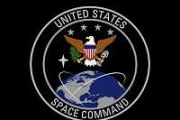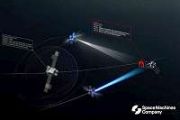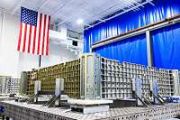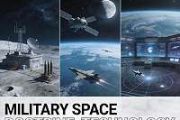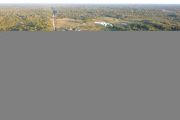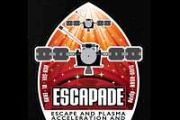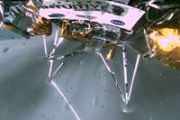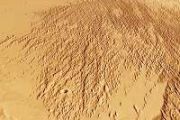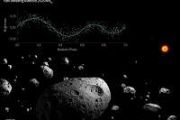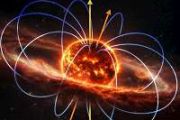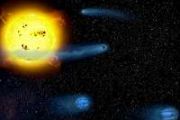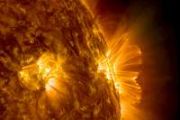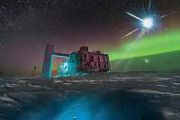
Copernical Team
First photos from the Moon under the hammer in Denmark

The first NASA photographs taken on the Moon, including the first shot of an "Earthrise" and Buzz Aldrin walking on the surface, will be auctioned off in Copenhagen on Wednesday.
"One of my favourite photos from this fantastic collection depicts a photo of Buzz Aldrin taken by Neil Armstrong, and you can actually see Neil Armstrong being reflected in Buzz Aldrin's visor", Kasper Nielsen, the head of the Bruun Rasmussen auction house's valuation team, told AFP.
A total of 74 unique NASA photographs are up for sale, including 26 taken on the Moon during the Apollo missions in the 1960s and 1970s.
NASA Studies 'New' 50-Year-Old Lunar Sample to Prep for Return to Moon
 People say good things come to those who wait. NASA thinks 50 years is the right amount of time as it begins tapping into one of the last unopened, Apollo-era lunar samples to learn more about the Moon and prepare for a return to its surface.
The sample is being opened at NASA's Johnson Space Center in Houston by the Astromaterials Research and Exploration Science Division (ARES), which sa
People say good things come to those who wait. NASA thinks 50 years is the right amount of time as it begins tapping into one of the last unopened, Apollo-era lunar samples to learn more about the Moon and prepare for a return to its surface.
The sample is being opened at NASA's Johnson Space Center in Houston by the Astromaterials Research and Exploration Science Division (ARES), which sa California fire led to spike in bacteria, cloudiness in coastal waters
 The November 2018 Woolsey Fire in Southern California's Los Angeles and Ventura counties left more than a nearly 100,000-acre burn scar behind: It also left the adjacent coastal waters with unusually high levels of fecal bacteria and sediment that remained for months.
For a new study, published in Nature Scientific Reports, scientists combined satellite imagery, precipitation data, and wat
The November 2018 Woolsey Fire in Southern California's Los Angeles and Ventura counties left more than a nearly 100,000-acre burn scar behind: It also left the adjacent coastal waters with unusually high levels of fecal bacteria and sediment that remained for months.
For a new study, published in Nature Scientific Reports, scientists combined satellite imagery, precipitation data, and wat North Korea claims new test of 'reconnaissance satellite' component
 North Korea carried out "another important test" towards the development of a reconnaissance satellite, state media said Sunday, but analysts warned it was a thinly-veiled ballistic missile launch, just days before South Korea elects a new president.
From hypersonic to medium-range ballistic missiles, Pyongyang test-fired a string of banned weaponry in January and last week launched what it
North Korea carried out "another important test" towards the development of a reconnaissance satellite, state media said Sunday, but analysts warned it was a thinly-veiled ballistic missile launch, just days before South Korea elects a new president.
From hypersonic to medium-range ballistic missiles, Pyongyang test-fired a string of banned weaponry in January and last week launched what it China launches seven new satellites
 China has successfully sent seven satellites into space from the Xichang Satellite Launch Center in southwest China's Sichuan Province Saturday.
Six satellites produced by Beijing-based GalaxySpace and a commercial remote sensing satellite were launched by a Long March-2C carrier rocket at 2:01 p.m. (Beijing Time) and have entered their planned orbit.
The satellites will verify the n
China has successfully sent seven satellites into space from the Xichang Satellite Launch Center in southwest China's Sichuan Province Saturday.
Six satellites produced by Beijing-based GalaxySpace and a commercial remote sensing satellite were launched by a Long March-2C carrier rocket at 2:01 p.m. (Beijing Time) and have entered their planned orbit.
The satellites will verify the n China's space station to host 6 astronauts by end of 2022
 China's space station is expected to host six astronauts from two spaceships by the end of 2022, according to the chief designer of the country's manned space program.
The Shenzhou-13 crew has been in orbit for 140 days. They are in good health, and have so far completed all planned or added tasks as needed. They are expected to return to Earth in mid-April, Zhou Jianping said.
This
China's space station is expected to host six astronauts from two spaceships by the end of 2022, according to the chief designer of the country's manned space program.
The Shenzhou-13 crew has been in orbit for 140 days. They are in good health, and have so far completed all planned or added tasks as needed. They are expected to return to Earth in mid-April, Zhou Jianping said.
This NeoPhotonics offers ultra-narrow linewidth laser for LEO satellites
 NeoPhotonics Corporation (NYSE: NPTN), a leading developer of silicon photonics and advanced hybrid photonic integrated circuit-based lasers, modules and subsystems for bandwidth-intensive, high-speed communications networks, has announced its new Radiation Tolerant version of its industry leading Nano ultra-pure light tunable laser which has been designed for use in low earth orbit satellite co
NeoPhotonics Corporation (NYSE: NPTN), a leading developer of silicon photonics and advanced hybrid photonic integrated circuit-based lasers, modules and subsystems for bandwidth-intensive, high-speed communications networks, has announced its new Radiation Tolerant version of its industry leading Nano ultra-pure light tunable laser which has been designed for use in low earth orbit satellite co Detecting ultralight dark matter using quantum technology
 A new study led by Tel Aviv University researchers demonstrates unprecedented sensitivity to an exciting dark matter candidate. As part of the new NASDUCK ("Noble and Alkali Spin Detectors for Ultralight Coherent dark-matter") collaboration, the researchers developed unique innovative quantum technology that enables receiving more accurate information on invisible theoretical particles "suspecte
A new study led by Tel Aviv University researchers demonstrates unprecedented sensitivity to an exciting dark matter candidate. As part of the new NASDUCK ("Noble and Alkali Spin Detectors for Ultralight Coherent dark-matter") collaboration, the researchers developed unique innovative quantum technology that enables receiving more accurate information on invisible theoretical particles "suspecte Event horizons are tunable factories of quantum entanglement
 LSU physicists have leveraged quantum information theory techniques to reveal a mechanism for amplifying, or "stimulating," the production of entanglement in the Hawking effect in a controlled manner. Furthermore, these scientists propose a protocol for testing this idea in the laboratory using artificially produced event horizons. These results have been recently published in Physical Review Le
LSU physicists have leveraged quantum information theory techniques to reveal a mechanism for amplifying, or "stimulating," the production of entanglement in the Hawking effect in a controlled manner. Furthermore, these scientists propose a protocol for testing this idea in the laboratory using artificially produced event horizons. These results have been recently published in Physical Review Le Challenges await sample-return expedition to Mars
 Chinese scientists and engineers will need to solve a host of technological challenges to accomplish an ambitious sample-return mission to Mars, said Wu Weiren, a key figure in the country's deep-space exploration program and also a top political adviser.
A senior scientist with the China National Space Administration and academician of the Chinese Academy of Engineering, Wu said the missi
Chinese scientists and engineers will need to solve a host of technological challenges to accomplish an ambitious sample-return mission to Mars, said Wu Weiren, a key figure in the country's deep-space exploration program and also a top political adviser.
A senior scientist with the China National Space Administration and academician of the Chinese Academy of Engineering, Wu said the missi 




